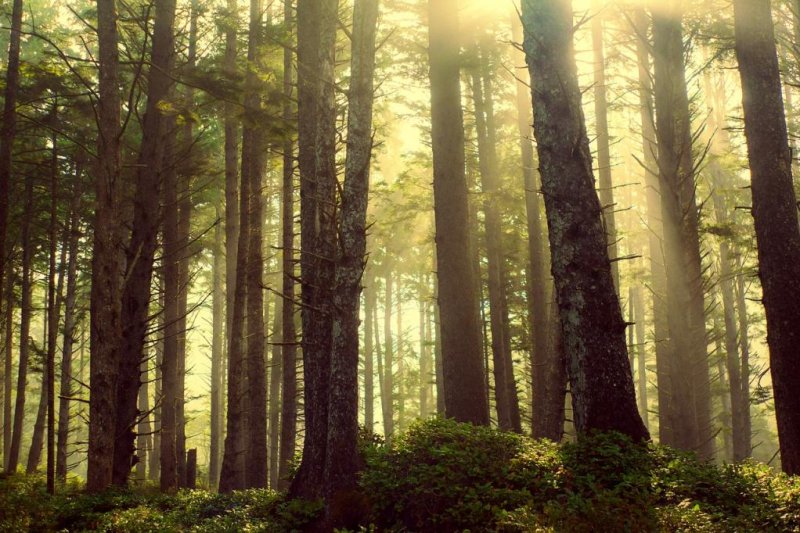A deadly fungus lurks in the coastal forests of the Pacific Northwest, and new research suggests the spores were originally carried to land by tsunamis. Photo by
TemperateSage/Pixabay
Oct. 2 (UPI) -- Tsunamis triggered by a major earthquake in Alaska in 1964 could explain how a deadly fungus colonized the coastal forests of British Columbia and Washington, and ultimately infected humans and animals, according to a new paper published this week in the journal mBio.
Since the first Cryptococcus gattii case was reported in 1999, more than 300 people in the Pacific Northwest have been infected with pneumonia-like cryptococcos. The infection, which initially causes a cough and shortness of breath, has a 10 percent rate of mortality -- higher in people with compromised immune systems.
Scientists have struggled to explain how the yeast-like fungus ended up in the temperate forests of the Pacific Northwest. The fungus is typically found in warmer regions, like Australia and Papua New Guinea, as well as parts of Europe, Africa and South America.
Now, researchers have a theory for how the fungus spread from the tropics to the Pacific Northwest.
When scientists analyzed the molecular age of Cryptococcus gattii strains found off the coasts of British Columbia and Washington, they found evidence that the fungus showed up shortly after the Panama canal opened in 1914. Scientists have previously theorized that the fungus is primarily spread by ballast water in ships. The opening of the Panama canal dramatically increased global shipping traffic, bringing ships from South America to the Pacific Northwest.
But how did the fungus end up on land, infecting people?
David Engelthaler, a genomic epidemiologist with the Translational Genomics Research Institute, and Arturo Casadevall, a microbiologist at the Johns Hopkins Bloomberg School of Public Health, contend the fungus was carried into coastal forests by tsunamis triggered by the 1964 Alaskan earthquake.
"There were a lot of pieces to this puzzle. When we started putting them together, it seemed that a singular event, like a natural disaster, could have been the missing piece that brought the whole picture together," Engelthaler said in a news release. "The tsunami idea seemed to fit the when, where and why of this disease emergence."
The magnitude 9.2 rumble was the second largest earthquake ever recorded. Some of the waves generated by it reached 200 feet in height. Tsunamis triggered by the quake landed on the shores of the Hawaiian islands.
According to the new theory, the massive waves carried fungal spores onto the coast where they colonized forest soil. For more than three decades, the fungus didn't infect humans or animals.
"We propose that C. gattii may have lost much of its human-infecting capacity when it was living in seawater, but then when it got to land, amoebas and other soil organisms worked on it for three decades or so until new C. gattii variants arose that were more pathogenic to animals and people," Casadevall said.
Unlike bacteria and viruses, fungal spores mate, driving adaptive changes. The more the fungus is exposed to different environs and novel predators, the more likely it is to evolve new traits -- and perhaps boost its ability to colonize the lungs of plants and animals.
Authors of the new study suggest it's likely C. gattii and other sea-bound fungi have colonized coasts elsewhere, but have yet to infect humans.
"The big new idea here is that tsunamis may be a significant mechanism by which pathogens spread from oceans and estuarial rivers onto land and then eventually to wildlife and humans," said Casadevall. "If this hypothesis is correct, then we may eventually see similar outbreaks of C. gattii, or similar fungi, in areas inundated by the 2004 Indonesian tsunami and 2011 Japanese tsunami."















